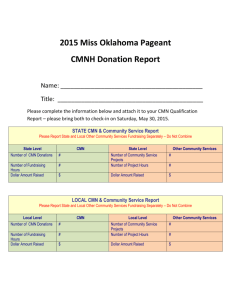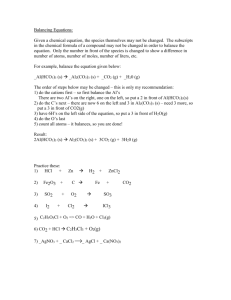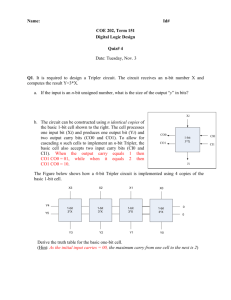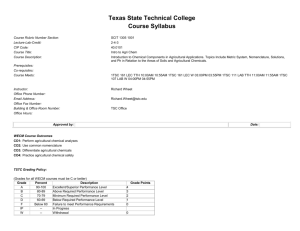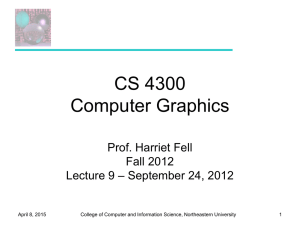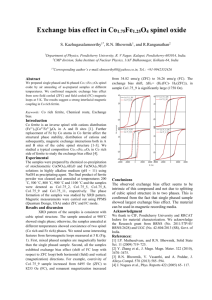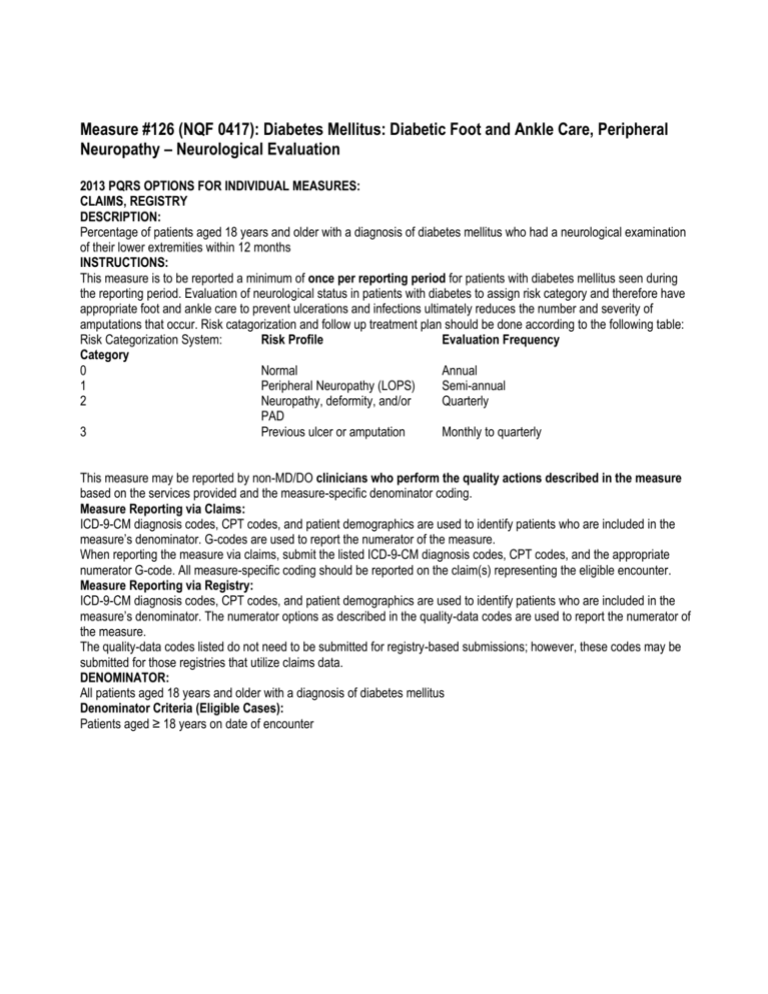
Measure #126 (NQF 0417): Diabetes Mellitus: Diabetic Foot and Ankle Care, Peripheral
Neuropathy – Neurological Evaluation
2013 PQRS OPTIONS FOR INDIVIDUAL MEASURES:
CLAIMS, REGISTRY
DESCRIPTION:
Percentage of patients aged 18 years and older with a diagnosis of diabetes mellitus who had a neurological examination
of their lower extremities within 12 months
INSTRUCTIONS:
This measure is to be reported a minimum of once per reporting period for patients with diabetes mellitus seen during
the reporting period. Evaluation of neurological status in patients with diabetes to assign risk category and therefore have
appropriate foot and ankle care to prevent ulcerations and infections ultimately reduces the number and severity of
amputations that occur. Risk catagorization and follow up treatment plan should be done according to the following table:
Risk Categorization System:
Risk Profile
Evaluation Frequency
Category
0
Normal
Annual
1
Peripheral Neuropathy (LOPS)
Semi-annual
2
Neuropathy, deformity, and/or
Quarterly
PAD
3
Previous ulcer or amputation
Monthly to quarterly
This measure may be reported by non-MD/DO clinicians who perform the quality actions described in the measure
based on the services provided and the measure-specific denominator coding.
Measure Reporting via Claims:
ICD-9-CM diagnosis codes, CPT codes, and patient demographics are used to identify patients who are included in the
measure’s denominator. G-codes are used to report the numerator of the measure.
When reporting the measure via claims, submit the listed ICD-9-CM diagnosis codes, CPT codes, and the appropriate
numerator G-code. All measure-specific coding should be reported on the claim(s) representing the eligible encounter.
Measure Reporting via Registry:
ICD-9-CM diagnosis codes, CPT codes, and patient demographics are used to identify patients who are included in the
measure’s denominator. The numerator options as described in the quality-data codes are used to report the numerator of
the measure.
The quality-data codes listed do not need to be submitted for registry-based submissions; however, these codes may be
submitted for those registries that utilize claims data.
DENOMINATOR:
All patients aged 18 years and older with a diagnosis of diabetes mellitus
Denominator Criteria (Eligible Cases):
Patients aged ≥ 18 years on date of encounter
AND
Diagnosis for diabetes (ICD-9-CM): 250.00, 250.01, 250.02, 250.03, 250.10, 250.11, 250.12, 250.13, 250.20, 250.21,
250.22, 250.23, 250.30, 250.31, 250.32, 250.33, 250.40, 250.41, 250.42, 250.43, 250.50, 250.51, 250.52, 250.53, 250.60,
250.61, 250.62, 250.63, 250.70, 250.71, 250.72, 250.73, 250.80, 250.81, 250.82, 250.83, 250.90, 250.91, 250.92, 250.93
Diagnosis for diabetes (ICD-10-CM) [REFERENCE ONLY/Not Reportable]: E10.10, E10.11, E10.21, E10.22, E10.29,
E10.311, E10.319, E10.321, E10.329, E10.331, E10.339, E10.341, E10.349, E10.351, E10.359, E10.36, E10.39, E10.40,
E10.41, E10.42, E10.43, E10.44, E10.49, E10.51, E10.52, E10.59, E10.610, E10.618, E10.620, E10.621, E10.622,
E10.628, E10.630, E10.638, E10.641, E10.649, E10.65, E10.69, E10.8, E10.9, E11.00, E11.01, E11.21, E11.22, E11.29,
E11.311, E11.319, E11.321, E11.329, E11.331, E11.339, E11.341, E11.349, E11.351, E11.359, E11.36, E11.39, E11.40,
E11.41, E11.42, E11.43, E11.44, E11.49, E11.51, E11.52, E11.59, E11.610, E11.618, E11.620, E11.621, E11.622,
E11.628, E11.630, E11.638, E11.641, E11.649, E11.65, E11.69, E11.8, E11.9, E13.00, E13.01, E13.10, E13.11, E13.21,
E13.22, E13.29, E13.311, E13.319, E13.321, E13.329, E13.331, E13.339, E13.341, E13.349, E13.351, E13.359, E13.36,
E13.39, E13.40, E13.41, E13.42, E13.43, E13.44, E13.49, E13.51, E13.52, E13.59, E13.610, E13.618, E13.620, E13.621,
E13.622, E13.628, E13.630, E13.638, E13.641, E13.649, E13.65, E13.69, E13.8, E13.9
AND
Patient encounter during the reporting period (CPT): 11042, 11043, 11044, 11055, 11056, 11057, 11719, 11720,
11721, 11730, 11740, 97001, 97002, 97597, 97598, 97802, 97803, 99201, 99202, 99203, 99204, 99205, 99212, 99213,
99214, 99215, 99304, 99305, 99306, 99307, 99308, 99309, 99310, 99324, 99325, 99326, 99327, 99328, 99334, 99335,
99336, 99337, 99341, 99342, 99343, 99344, 99345, 99347, 99348, 99349, 99350
NUMERATOR:
Patients who had a lower extremity neurological exam performed at least once within 12 months
Definition:
Lower Extremity Neurological Exam – Consists of a documented evaluation of motor and sensory abilities and may
include: reflexes, vibratory, proprioception, sharp/dull and 5.07 filament detection. The components listed are consistent
with the neurological assessment recommended by the Task Force of the Foot Care Interest Group of the American
Diabetes Association. They generally recommend at least two of the listed tests be performed when evaluating for loss of
protective sensation; however the clinician should perform all necessary tests to make the proper evaluation.
Numerator Quality-Data Coding Options for Reporting Satisfactorily:
Lower Extremity Neurological Exam Performed
G8404: Lower extremity neurological exam performed and documented
OR
Lower Extremity Neurological Exam not Performed for Documented Reasons
G8406: Clinician documented that patient was not an eligible candidate for lower extremity neurological
exam measure
OR
Lower Extremity Neurological Exam not Performed
G8405: Lower extremity neurological exam not performed
RATIONALE:
Foot ulceration is the most common single precursor to lower extremity amputations among persons with diabetes.
Treatment of infected foot wounds accounts for up to one-quarter of all inpatient hospital admissions for people with
diabetes in the United States. Peripheral sensory neuropathy in the absence of perceived trauma is the primary Date:
11/16/2012 Version 7.1 Page 276 of 637 CPT only copyright 2012 American Medical Association. All rights reserved.
factor leading to diabetic foot ulcerations. Approximately 45-60% of all diabetic ulcerations are purely neuropathic.
Other forms of neuropathy may also play a role in foot ulcerations. Motor neuropathy resulting in anterior crural
muscle atrophy or intrinsic muscle wasting can lead to foot deformities such as foot drop, equinus, and hammertoes.
In people with diabetes, 22.8% have foot problems – such as amputations and numbness – compared with 10% of
nondiabetics. Over the age of 40 years old, 30% of people with diabetes have loss of sensation in their feet.
CLINICAL RECOMMENDATION STATEMENTS:
Recognizing important risk factors and making a logical, treatment-oriented assessment of the diabetic
foot requires a consistent and thorough diagnostic approach using a common language. Without such a
method, the practitioner is more likely to overlook vital information and to pay inordinate attention to
less critical points in the evaluation. A useful examination will involve identification of key risk factors
and assignment into appropriate risk category. Only then can an effective treatment plan be designed
and implemented. (ACFAS/ACFAOM Clinical Practice Guidelines)


